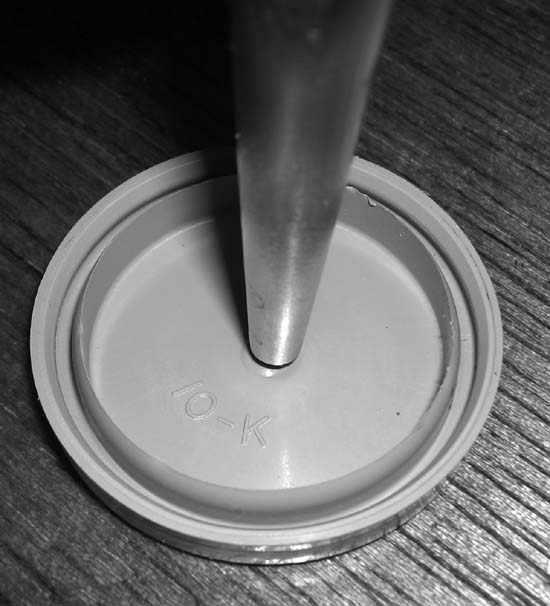Hack37.Build a Film Can Collimating Tool
Hack 37. Build a Film Can Collimating Tool
Align your scope on the cheap. Collimation is the process of aligning a telescope so that all of the mirrors and lenses share a common optical axis. There are numerous collimation tools available commercially, including sight tubes, Cheshire eyepieces, laser collimators, autocollimators, and so on. Two of the most popular tools are a combination sight-tube/Cheshire and a laser collimator, such as the Orion models, shown in Figure 3-11. None of these collimating tools allows you to collimate a scope perfectly. Their purpose is to get the collimation close enough that you can do final tweaks on a defocused star to achieve perfect collimation [Hack #40]. Star-collimation allows you to adjust alignment almost perfectly, but it's nearly impossible to star-collimate a scope unless it is already reasonably well collimated. How close you need to get to perfect collimation before you can star-collimate depends on the focal ratio [Hack #9] of the scope. An f/5 or faster scope must be very close to perfect before it's possible to star-collimate it. An f/8 or slower scope need only be moderately well collimated. Figure 3-11. A sight-tube/Cheshire (left) and a laser collimator For fast scopes, we recommend using a combination sight-tube/Cheshire to do the preliminary collimation. But for slower scopes, there's no need to spend the $35 or so that a sight-tube/Cheshire costs. Instead, you can make your own sight tube for $0 and a few minutes' work. All you need is an empty 35mm film can, a sharp knife, a center punch or nail, and a small drill bit (we used a 1/16" bit, but anything close to that is fine). Coincidentally, a film can is almost exactly the same diameter as a 1.25" eyepiece, and the lid is just large enough to prevent the can from sliding down into the focuser. Ablack plastic Kodak film can with a gray plastic top is ideal. To begin, use a sharp knife or scissors to cut the bottom off the can, as shown in Figure 3-12. Work carefully, and try to avoid bending the film can out of round. Discard the bottom of the can. The next step is to create a perfectly centered peephole in the lid, which will allow you to place your eye exactly on the optical axis of the scope. Fortunately, the lid has a small raised nub that marks its exact center. Place the film can lid upside down on a flat surface, and use a center punch, nail, or heavy needle to mark the exact center of the lid, as shown in Figure 3-13. Once you have a center-punched dent to prevent the drill bit from "walking," use the 1/16" drill bit to cut a clean, circular hole in the center of the film can lid. Snap the lid back onto the film can, and you're done. To use your film-can collimator, simply insert it into the focuser as you would an eyepiece, put your eye to the peephole, and verify that all of the optical components appear as concentric circles in your field of view [Hack #38]. Figure 3-12. Remove the base of the film can using a sharp knife Figure 3-13. Center punch the lid of the film can
|
EAN: 2147483647
Pages: 112
